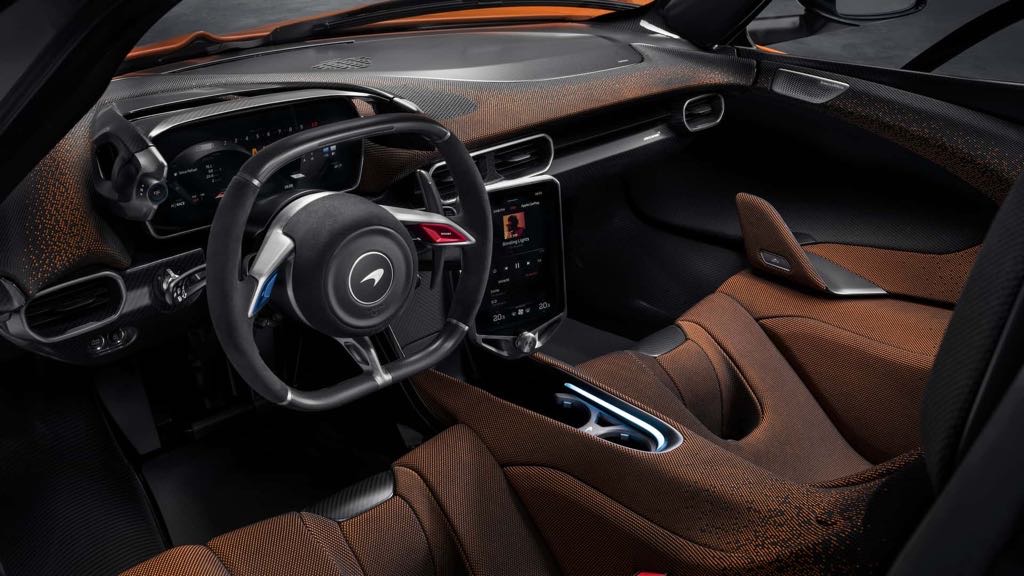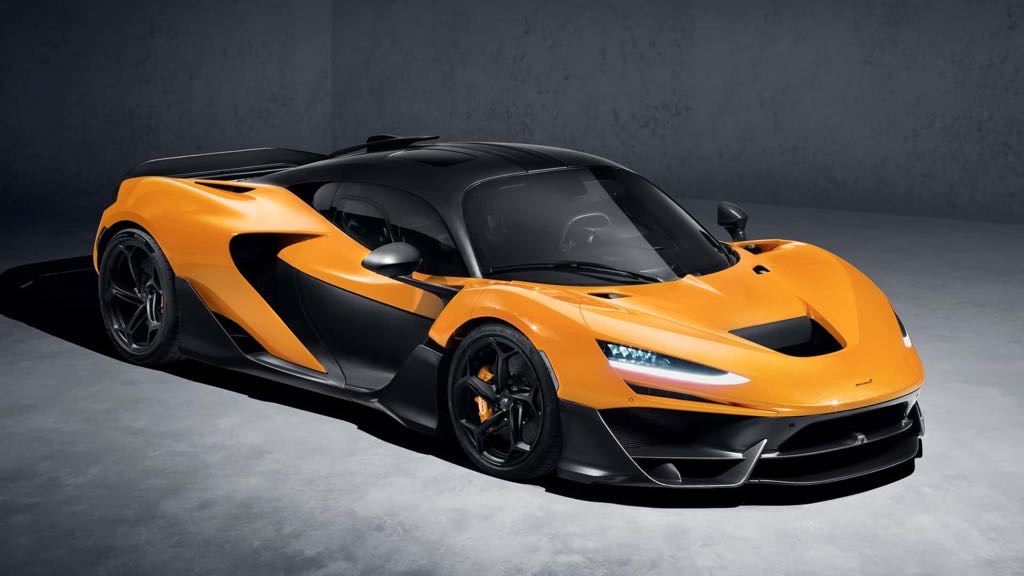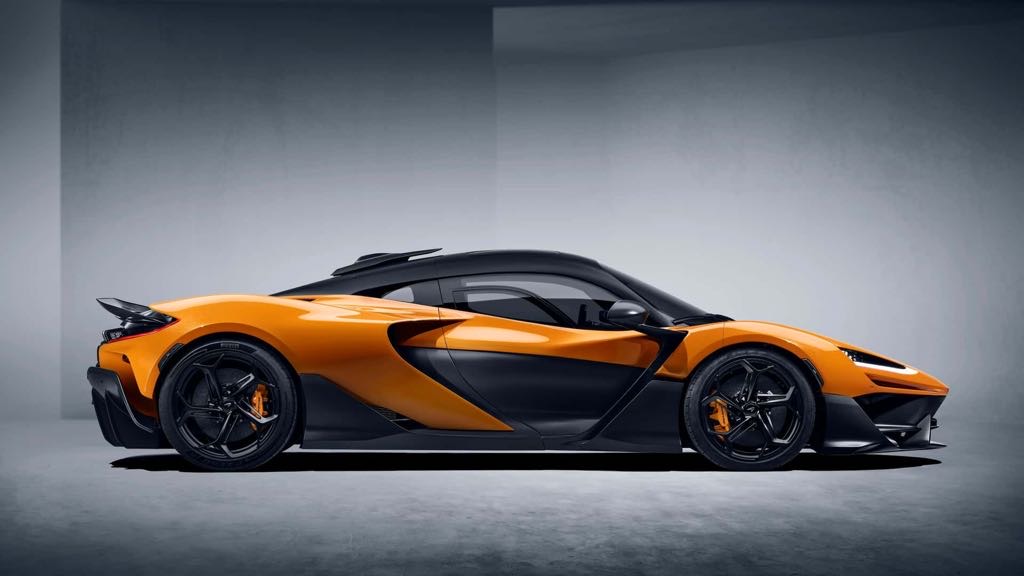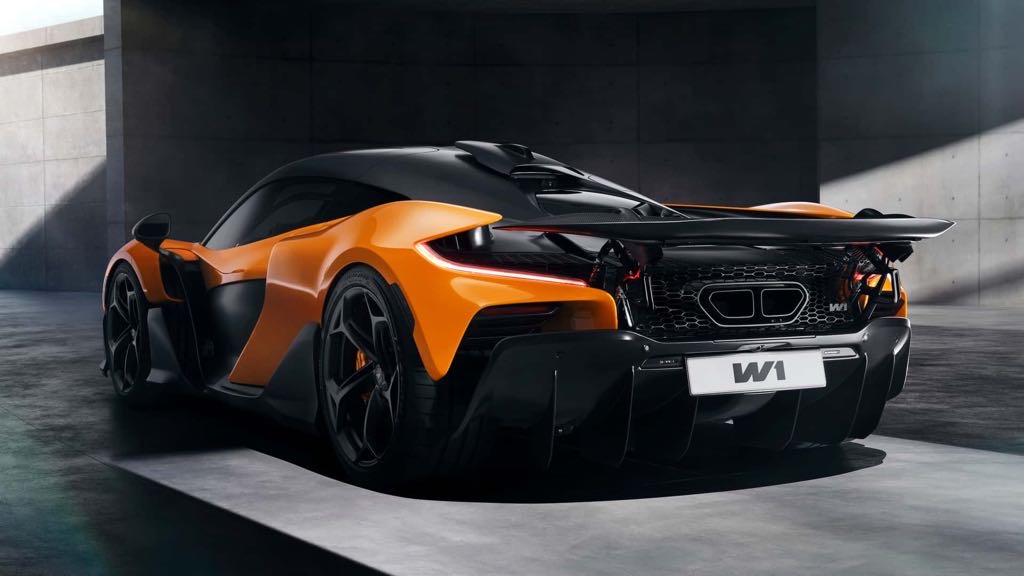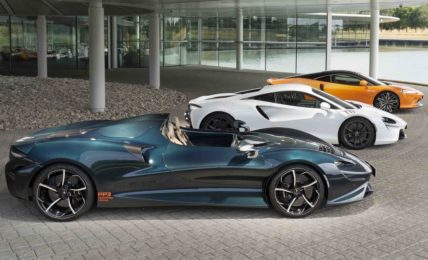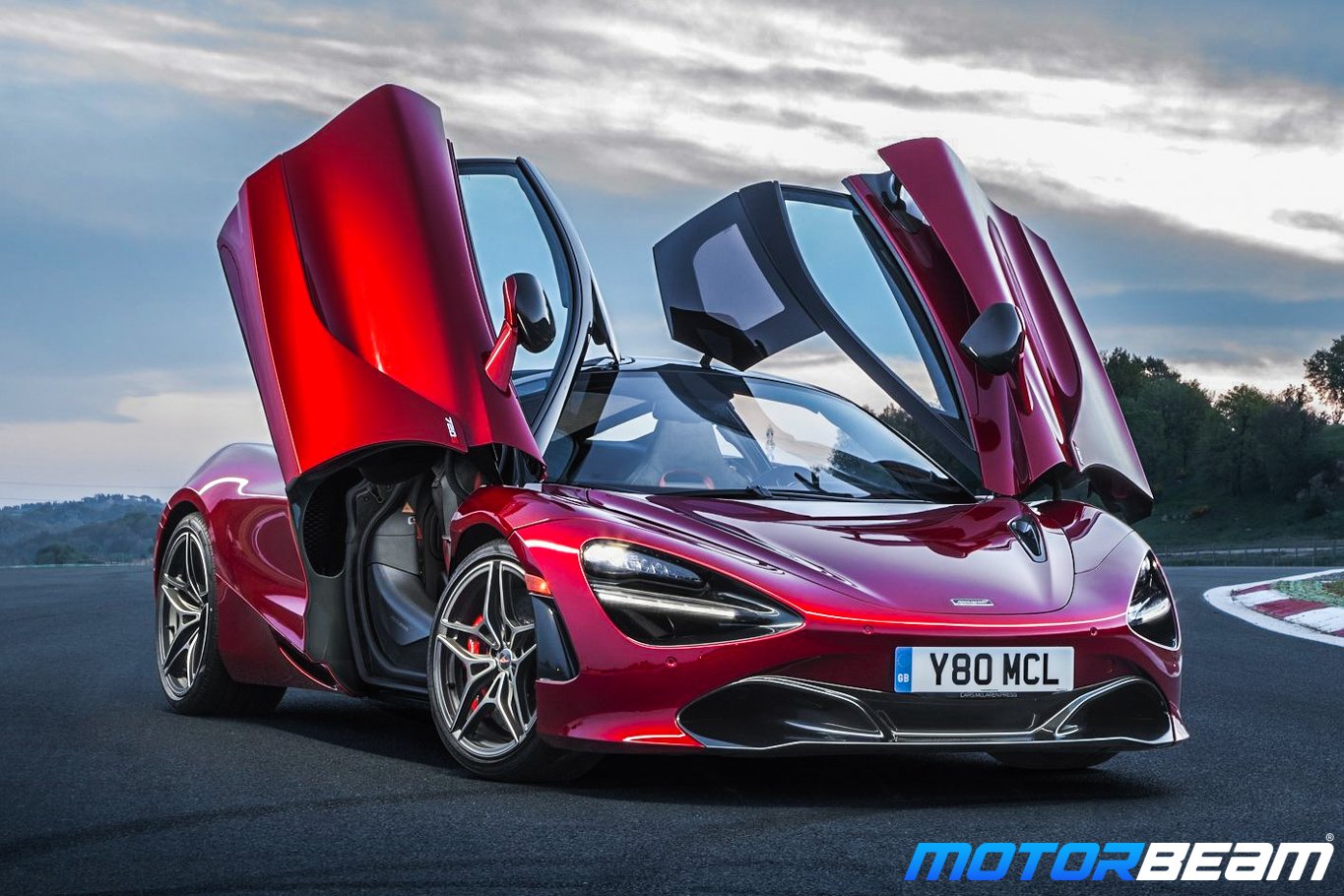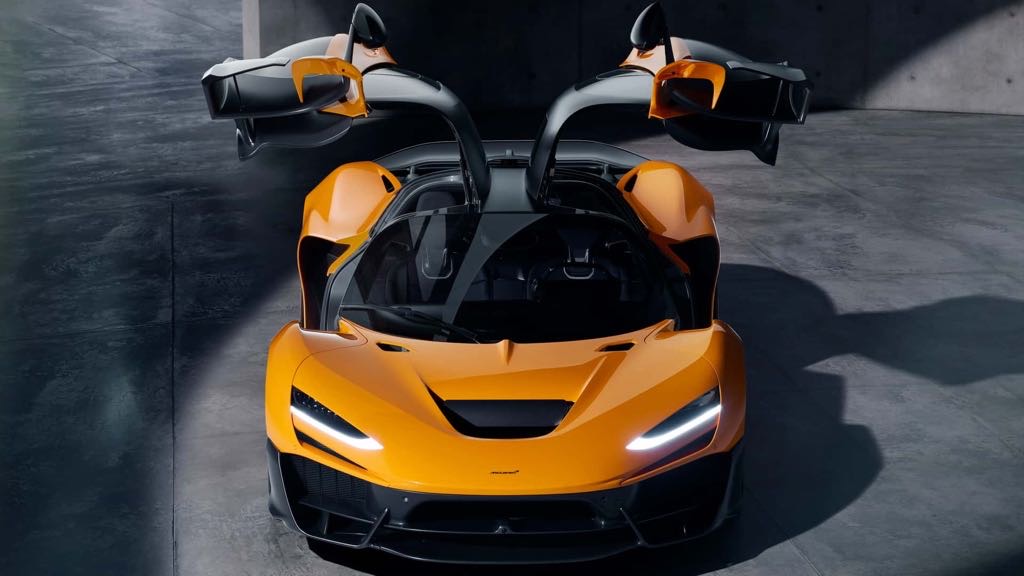
McLaren W1 – the most powerful & quickest accelerating McLaren road car ever
McLaren W1 hypercar officially revealed, which it deems the true successor to the iconic P1. While the Senna and Speedtail followed the P1, the new W1 is set to push boundaries even further, surpassing previous models in terms of power and performance. Positioned as McLaren’s most advanced hypercar yet, the W1 boasts impressive specifications, record-breaking performance and cutting-edge hybrid technology.
Power and Performance
The McLaren W1 combines a 4.0-litre twin-turbo V8 with an electric motor to produce a total output of 1275 HP and 1340 Nm of torque. The V8 engine, which generates 928 HP, is the most powerful engine McLaren has ever produced. Developed in collaboration with Ricardo, the engine uses both direct and port fuel injection to achieve the highest output per litre of any McLaren engine to date.
The electric motor, contributing an additional 347 HP, is powered by a 1.384kWh battery. This hybrid system weighs 40 percent less than that of the P1 but delivers 40 percent more power, enhancing performance while maintaining efficiency. The electric motor also provides other practical benefits, such as enabling silent start-ups, acting as a reverse gear and allowing the W1 to run on electric power alone for up to 2 km.
The W1’s combined power output enables it to accelerate from 0-100 km/hr in 2.7 seconds, reach 200 km/hr in 5.8 seconds and hit 300 km/hr in 12.7 seconds. The car’s top speed is electronically limited to 350 km/hr. McLaren highlights the car’s “crescendo” engine note, which builds as the engine nears its 9200 RPM redline.
Aerodynamics and Chassis
The W1 employs advanced aerodynamics inspired by Formula 1, contributing to its impressive performance on the track. It is the second road car, after the Aston Martin Valkyrie, to incorporate true ground-effect aerodynamics. The car features active front and rear wings, including its signature Active Long Tail rear wing that extends horizontally by 300 mm to enhance downforce while minimising drag.
In its most extreme setting—Race mode—the W1 generates a total of 1000 kg of downforce (350 kg at the front and 650 kg at the rear). This allows the hypercar to lap circuits faster than the track-focused McLaren Senna. At McLaren’s Nardò testing facility, the W1 shaved three seconds off the Senna’s lap time, a testament to the car’s stability and cornering ability at high speeds.
The W1’s chassis is constructed around a central Aerocell carbon-fiber monocoque, keeping weight down while integrating the car’s two seats. McLaren has introduced new suspension technology with the W1, including Race Active Chassis Control III and pushrod suspension, which enhance both comfort and performance. The system adjusts ride height and stiffness depending on the selected driving mode, with options ranging from Comfort to Race+.
Design and Interior
Although slightly larger than the P1, the McLaren W1 retains a similar weight, thanks to extensive use of lightweight materials such as titanium and carbon fiber. The car measures 4635 mm in length, 2074 mm in width and 1182 mm in height, with a wheelbase of 2680 mm. It sits on magnesium alloy wheels fitted with bespoke Pirelli tires.
McLaren has emphasized the usability and comfort of the W1, describing it as a car that can handle everyday driving just as well as track performance. The interior, featuring fully upholstered seats and a more reclined seating position for added comfort, reflects this balance. The W1 also offers best-in-class visibility thanks to thin A-pillars, and ingress and egress have been designed to be as easy as possible for a car of this type. The steering wheel is smaller than usual and optionally includes shift lights to indicate when the redline is approaching.
The W1 comes equipped with a central 8-inch touchscreen running Apple CarPlay (although Android Auto is notably absent), and there is storage space behind the rear seats for weekend bags or helmets.
Exclusive Production and Availability
All 399 examples of the McLaren W1 have already been sold ahead of its production start in 2026. With a starting price exceeding GBP 2 million (around Rs. 22 crores), prices are expected to increase significantly due to the extensive customisation options available. Each W1 comes with a four-year service plan, featuring 12-month service intervals similar to McLaren’s V6 hybrid models.
With its combination of record-breaking performance, advanced aerodynamics and hybrid technology, the McLaren W1 stands as a worthy successor to the P1, continuing McLaren’s legacy of pushing the limits of hypercar performance while offering a balance between track capability and everyday usability.
